Juniper JN0-682 Data Center, Professional (JNCIP-DC) Online Training
Juniper JN0-682 Online Training
The questions for JN0-682 were last updated at Dec 14,2025.
- Exam Code: JN0-682
- Exam Name: Data Center, Professional (JNCIP-DC)
- Certification Provider: Juniper
- Latest update: Dec 14,2025
You are configuring a DCI VPN solution between sites that require an L3VPN to work with your EVPN deployment. Your organization’s policy restricts configuring RSVP and LDP on your WAN links. While configuring the solution, you notice that no routes exist in the inet table.
In this scenario, which parameter will solve this problem?
- A . bgp family inet labeled-unicast per-group-label
- B . bgp family inet labeled-unicast aggregate-label
- C . bgp family inet labeled-unicast resolve-vpn
- D . bgp family evpn signaling
You are asked to configure JTI on the QFX Series devices in your data center fabric. You must use sensors with the least amount of latency.
Which type of sensor should you use in this scenario?
- A . Python sensors
- B . JTI native sensors
- C . analog sensors
- D . JTI OpenConfig sensors
You are asked to manage multicast traffic in the EVPN-VXLAN environment. You must ensure that multicast traffic is delivered only to the leaf device with interested receivers.
In this scenario, which feature is required on leaf devices to accomplish this task?
- A . PIM
- B . IGMP snooping
- C . MSDP
- D . DVMRP
An EVPN-signaled VXLAN overlay has been deployed in the network shown in the exhibit. An EVPN LAG has been configured to connect host1 to the network, and device leaf1 has been elected as the designated forwarder.
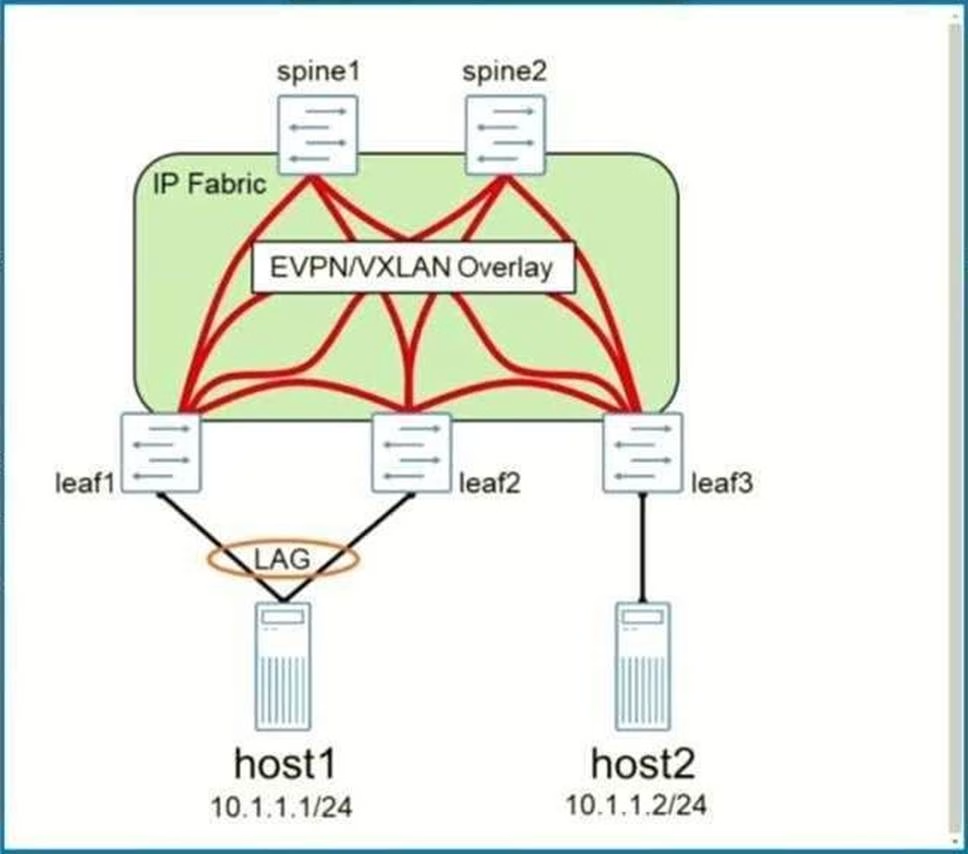
In this scenario, which statement is true?
- A . The Ieaf3 device can utilize both leaf1 and Ieaf2 to forward unicast packets from host2 to host1.
- B . An ICCP control link must be configured between leaf1 and Ieaf2.
- C . The Ieaf3 device will only receive an advertisement to the LAG segment from leaf1.
- D . Broadcast packets sent from host2 will not be forwarded to Ieaf2.
Which statement is true about the route shown in the exhibit?
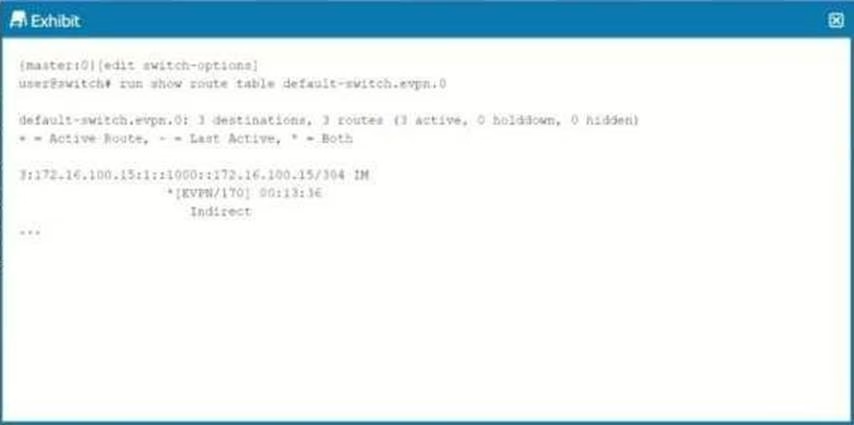
- A . The route target on this route is 1000
- B . The route is an EVPN type-1 route.
- C . The route uses a type-1 route distinguisher.
- D . The VNI for this route is 304.
You are asked to implement VXLAN in your data center network. You must choose between implementing EVPN signaling and multicast signaling.
Which two statements are correct in this scenario? (Choose two.)
- A . EVPN signaling reduces ARP flooding and multicast signaling does not.
- B . EVPN signaling propagates MAC addresses across the network and multicast signaling does not.
- C . EVPN signaling uses a standards-based protocol and multicast signaling does not.
- D . EVPN signaling enables distributed Layer 3 gateways and multicast signaling does not.
You have a two spine and four leaf CRB topology and you must ensure that the hosts connected to the leaf devices have reachability to all IRB interface addresses, including the local spine IRB addresses, and the virtual gateway address.
Which two configuration parameters must be used to accomplish this task? (Choose two.)
- A . Configure a spine-to-spine BGP peering as part of the overlay.
- B . Configure virtual-gateway-accept-data under the IRB interface.
- C . Configure a spine-to-spine EVPN peering as part of the routing instance.
- D . Configure proxy-macip-advertisement under the IRB interface.
You are troubleshooting a connectivity issue across a VXLAN overlay network. In the exhibit, you are using the ping overlay command from a local VTEP residing on a OFX 5120 to a remote VTEP residing on a separate QFX5120.
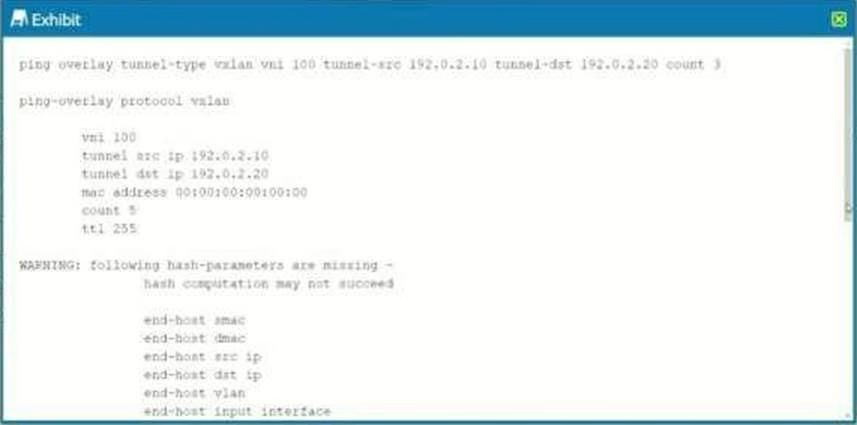
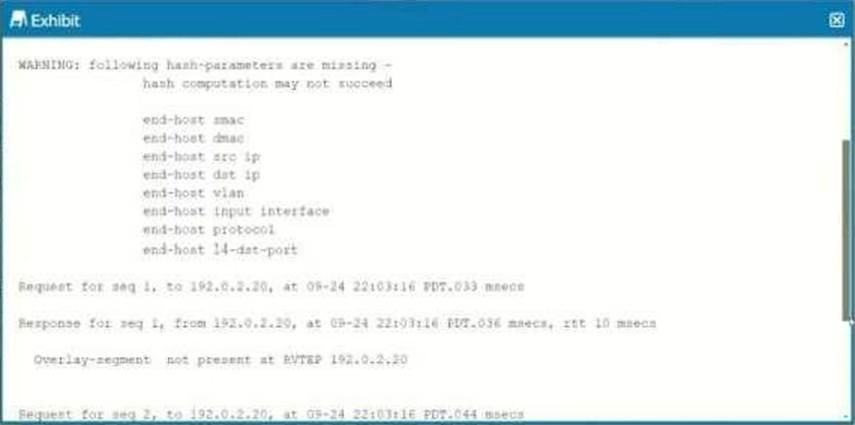
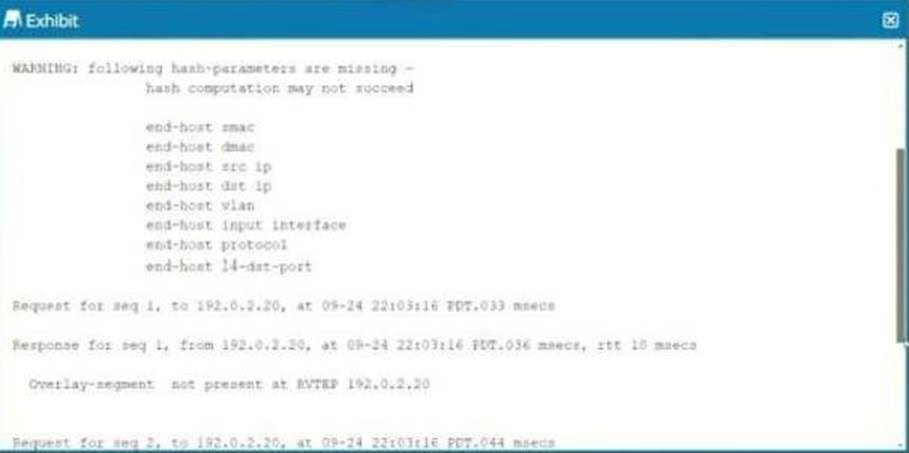
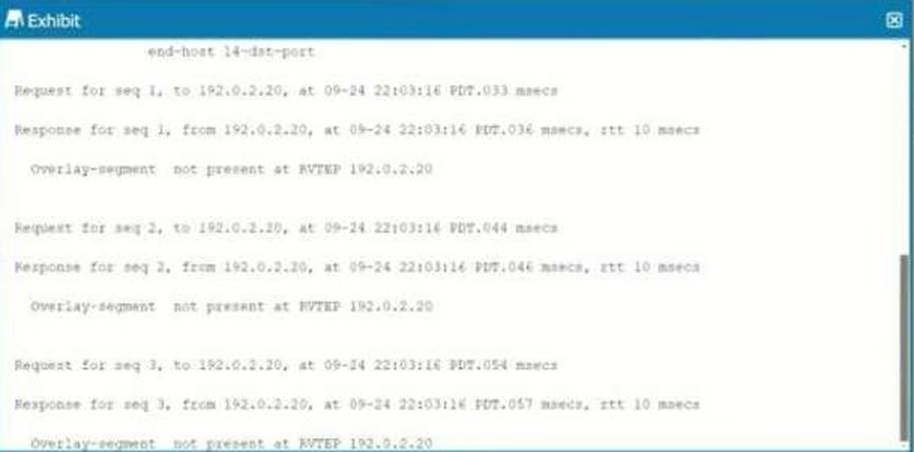
What is the problem in this situation?
- A . The VXLAN controller is down.
- B . VXLAN VN1100 is not configured on the local VTEP
- C . VXLAN VN1100 is not configured on the remote VTEP.
- D . VXLAN VN1100 is not configured on both end points.
Which event triggers the generation of a EVPN type-4 route?
- A . When unknown unicast traffic is received on an interface.
- B . When known unicast traffic is received on an interface.
- C . When a new VNI is configured.
- D . When a new ESI is configured.
A VXLAN has been created between devices leaf1 and Ieaf3.
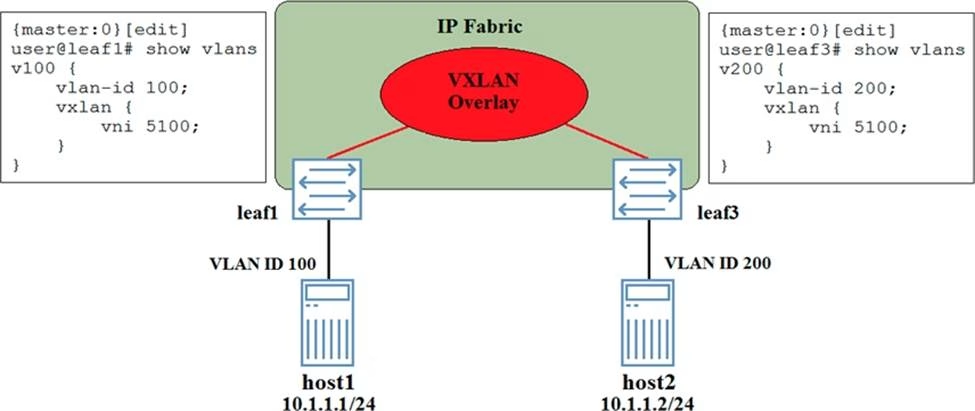
Referring to the exhibit, which statement is true?
- A . Traffic sent from host1 to host2 will be dropped on Ieaf3.
- B . Traffic sent from host1 to host2 will be tagged with VLAN ID 100 when exiting Ieaf3.
- C . Traffic sent from host1 to host2 will be tagged with VLAN ID 200 when exiting Ieaf3.
- D . Traffic sent from host1 to host2 will be dropped on leaf1.
Latest JN0-682 Dumps Valid Version with 65 Q&As
Latest And Valid Q&A | Instant Download | Once Fail, Full Refund

